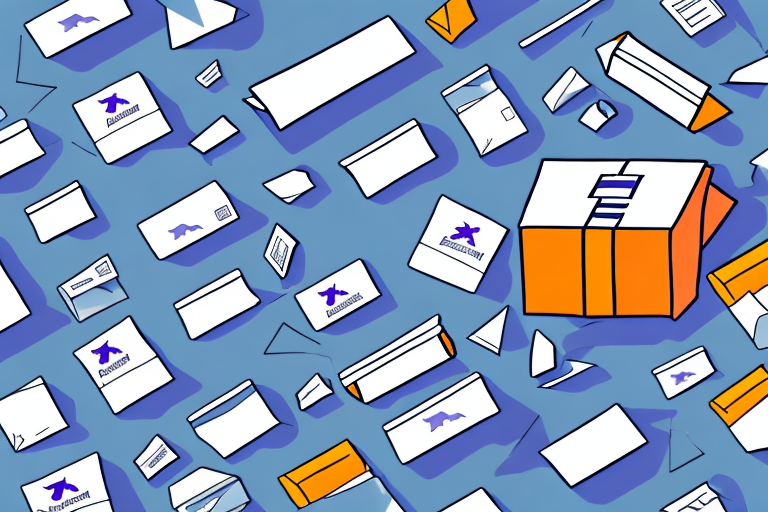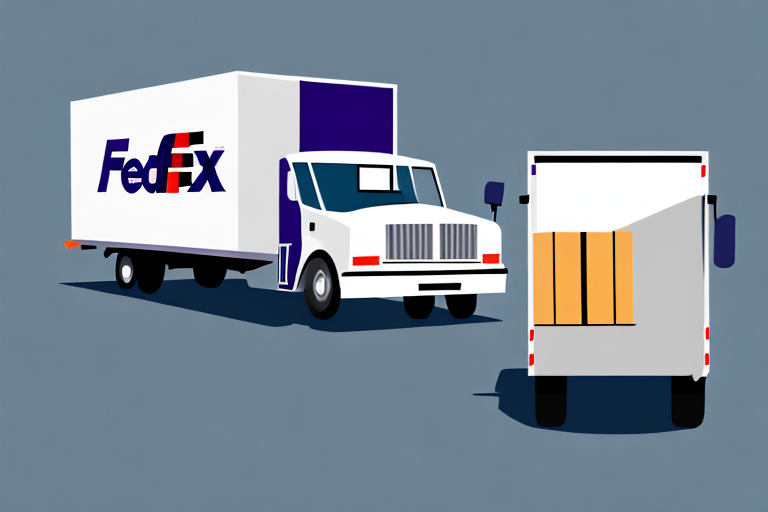How to Handle a Shipment Exception with FedEx
Regularly shipping packages with FedEx? You might have encountered a shipment exception, a situation where there's a delay or issue in delivering your package. Understanding the causes of shipment exceptions and knowing how to handle them can save you both time and money. This comprehensive guide covers everything you need to know about managing shipment exceptions with FedEx.
Understanding FedEx Shipment Exceptions
A shipment exception is FedEx’s term for any delay or problem that occurs during the delivery process. These exceptions can arise from various factors, including:
- Incorrect Delivery Attempts: Deliveries to wrong addresses or incomplete recipient information.
- Package Damage: Occurs when a package or its contents are harmed during transit.
- Adverse Weather Conditions: Severe weather like hurricanes, snowstorms, or floods disrupting delivery schedules.
- Customs Clearance Delays: Especially relevant for international shipments facing regulatory or documentation issues.
For instance, if the recipient is unavailable during the delivery attempt, FedEx typically retries the next business day. Persistent unavailability may result in the package being held at a FedEx facility for pickup.
Common Types of Shipment Exceptions with FedEx
FedEx categorizes shipment exceptions to help customers identify and address issues efficiently. The most common types include:
- Delivery Exception: Issues with the delivery address or recipient information preventing successful delivery.
- Missed Delivery: The courier attempts delivery but cannot complete it due to recipient unavailability or inaccessible address.
- Shipment Delay: Unforeseen circumstances outside FedEx’s control causing delivery postponements.
- Package Damage: Physical harm to the package or its contents during transit.
- Clearance Delay: Holds due to customs or other regulatory requirements for international shipments.
In the event of a shipment exception, FedEx strives to resolve the issue promptly. Customers can track their packages online for real-time updates on any exceptions or delays. Additionally, FedEx offers various shipping options designed to minimize the likelihood of shipment exceptions.
Causes of Shipment Exceptions with FedEx
Understanding the root causes of shipment exceptions can help in preventing them. The most common causes include:
- Address Errors: Typos, incomplete addresses, or incorrect recipient information can misroute packages.
- Weather Conditions: Natural disasters or severe weather can disrupt delivery schedules significantly.
- Customs Issues: International shipments may experience delays due to customs clearance and regulatory compliance.
- Package Damage: Inadequate packaging can lead to damage during transit, resulting in delivery issues.
- Incorrect Labeling: Mislabeling can cause packages to be misrouted or delayed within FedEx’s network.
- Carrier Capacity Issues: High volume periods, such as holidays, can strain carrier capacity, leading to delays.
To mitigate these issues, ensure all shipment details are accurate, packages are properly labeled and securely packed, and consider shipping during off-peak times when possible.
How to Track FedEx Shipments for Potential Exceptions
Proactive tracking is essential to identify and address shipment exceptions promptly. FedEx offers robust tracking tools that provide real-time updates on your package’s status. Here’s how to utilize them effectively:
- Obtain the Tracking Number: Provided by the sender, this unique identifier is crucial for monitoring your shipment.
- Visit the FedEx Tracking Page: Navigate to the [FedEx Tracking](https://www.fedex.com/en-us/tracking.html) page.
- Enter the Tracking Number: Input your tracking number into the designated field to access detailed tracking information.
- Monitor Status Updates: Receive real-time alerts on your shipment’s progress, including any exceptions or delays.
If you detect an exception, such as a delay or delivery issue, contact [FedEx Customer Service](https://www.shipscience.com/contact-fedex-customer-service/) immediately for assistance in resolving the matter.
Steps to Take When You Encounter a Shipment Exception with FedEx
Encountering a shipment exception can be stressful, but taking the right steps can help resolve the issue efficiently:
- Contact FedEx Customer Service: Reach out to FedEx’s support team to inquire about the exception and seek guidance.
- Provide Accurate Information: If there's an error in the recipient's details, supply corrected information to expedite resolution.
- Request a Delivery Change: If the current delivery address is problematic or the recipient is unavailable, ask FedEx to modify the delivery location or schedule.
- Utilize Package Intercept: Redirect your package to a new address or request it be held at a FedEx location for pickup.
- File a Claim: For lost or damaged packages, initiate a claim to seek compensation for the package’s value and contents.
Acting swiftly is crucial to prevent further delays and ensure the safe delivery of your package.
How to Resolve Delivery Exceptions with FedEx
Resolving delivery exceptions involves a series of steps to address the underlying issues effectively:
- Contact Customer Service: FedEx’s support team can provide specific guidance tailored to your situation.
- Verify Address Information: Double-check that the delivery address and recipient details are correct to avoid misrouting.
- Schedule a Redelivery: If the initial attempt failed, arrange for FedEx to attempt delivery again at a convenient time.
In cases where additional information is required, such as signature authorization for package release, provide the necessary documentation promptly to facilitate resolution.
Tips for Preventing Shipment Exceptions with FedEx
Prevention is better than cure. Implementing the following strategies can significantly reduce the likelihood of encountering shipment exceptions with FedEx:
- Double-Check Delivery Information: Ensure all recipient details are accurate before shipping to prevent address-related issues.
- Consider Shipping Insurance: Protect your packages against unforeseen damages or losses by opting for shipping insurance.
- Maintain Proper Packaging: Use appropriate packaging materials to secure your items and prevent damage during transit.
- Stay Informed About Shipping Restrictions: Familiarize yourself with FedEx’s guidelines on shipping restricted items to avoid compliance issues.
- Plan Ahead for Peak Seasons: Anticipate high-volume periods like holidays by scheduling shipments earlier to accommodate potential delays.
Adhering to these best practices can enhance the efficiency of your shipments and minimize the chances of encountering exceptions.
What Happens After a Shipment Exception is Resolved?
Once a shipment exception is addressed, your package resumes its journey to the designated delivery point. Here’s what to expect post-resolution:
- Continued Tracking: The FedEx tracking system will update the status of your package, reflecting its progress toward delivery.
- Potential Delivery Delay: Depending on the nature of the exception, there might be a slight delay in the delivery schedule.
- Customer Notifications: FedEx may provide updates or confirmations once the exception is resolved and the package is back on track.
If the exception resulted in package damage, it's advisable to contact FedEx promptly to file a claim and seek compensation.
Dealing with Lost or Damaged Packages: A Guide for FedEx Customers
Despite best efforts, packages can sometimes be lost or damaged during transit. Here's how to handle such situations with FedEx:
- File a Claim: Visit the [FedEx Claims](https://www.fedex.com/en-us/customer-support/claims.html) page to initiate a claim for lost or damaged packages. Provide necessary documentation, including proof of value and photos of the damage.
- Provide Detailed Information: Clearly explain the issue and supply all required information to expedite the claims process.
- Await Investigation: FedEx will investigate the claim to determine responsibility and eligibility for compensation.
- Receive Compensation: If the claim is approved, FedEx will reimburse the value of the lost or damaged items as per their policies.
Additionally, consider subscribing to FedEx’s Delivery Manager service. This tool allows you to customize delivery preferences, receive real-time notifications, and redirect packages to alternate addresses, providing greater control over your shipments.
Remember, certain items may not be eligible for reimbursement, such as prohibited items or those with limited liability. Always review FedEx’s [prohibited items list](https://www.fedex.com/en-us/shipping/ship-items.html) and packaging guidelines to ensure your packages are compliant and adequately protected.




















